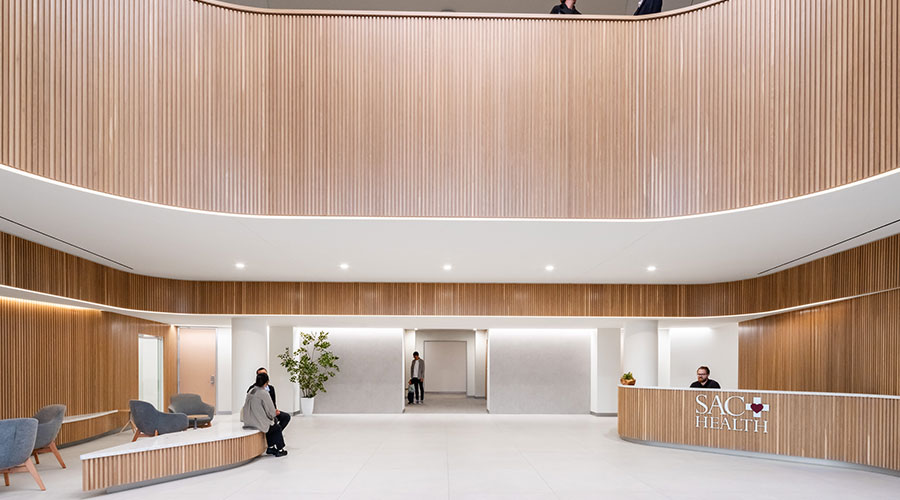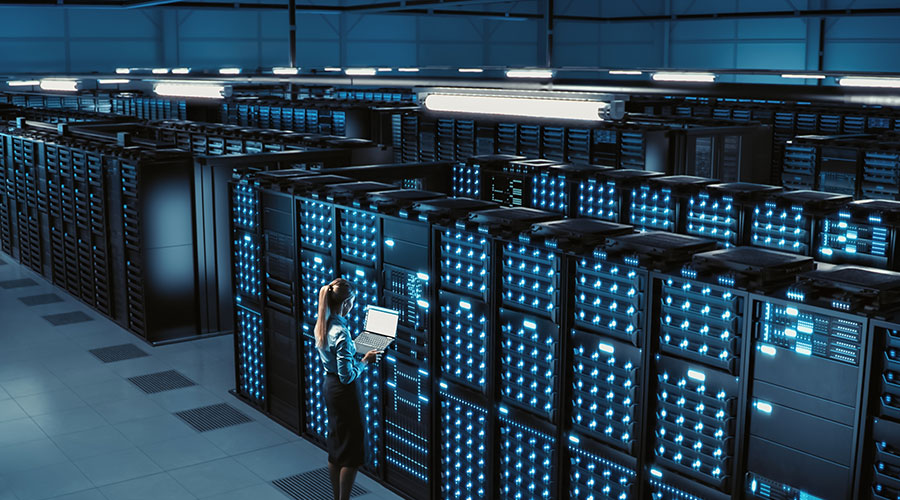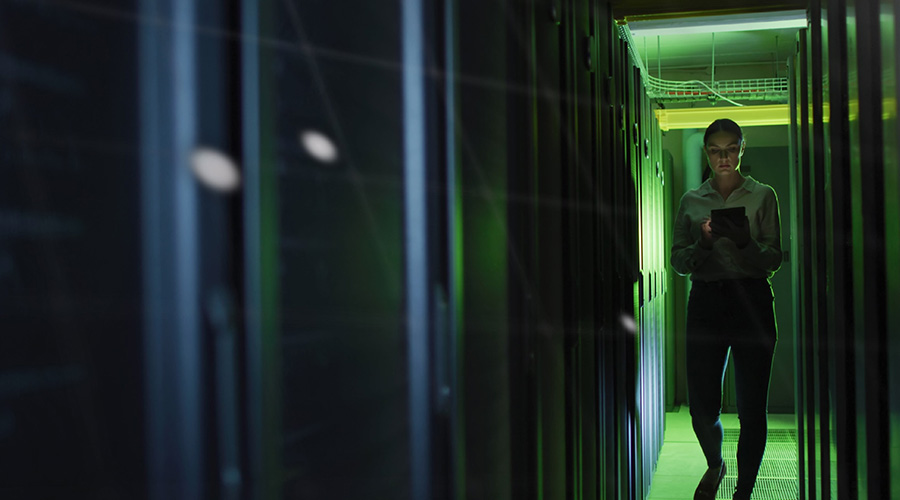An Ounce of Prevention Keeps Data Center Fires at Bay
Seven strategies drive planning and design of a cost-effective fire protection system
In 1965, Intel co-founder Gordon E. Moore offered a bold prediction: Within a few generations of development, a silicon chip could be made to hold a billion transistors. He was right. And along with the exponential growth in computing power over the ensuing decades has come an exponential growth in the demand for data — by customers, shareholders and regulators. Behold the data center. With data centers becoming mission-critical facilities, facility executives need practical planning and design strategies to prevent, detect and suppress fire.
What fuels fires in data centers? An analysis of historical data maintained by the telecommunications industry suggests several common fuel sources:
- Accumulations of underfloor combustible materials, such as unused wiring insulation and connectors
- Paper storage and supplies within data center space
- Tape storage materials stored outside of the designated storage space
- Improper storage and maintenance of fuel for emergency generators
- Failure of personnel to adhere to stated guidelines and a lack of training on correct procedures in the building
- Fuel system piping leaks.
Most facility executives are aware of these common risks and take pains to reduce or eliminate them. However, there are also risks associated with aging infrastructure and improperly executed rack expansions and building modifications: electrical cord failures and shorts and overloaded circuits and improper or poorly maintained terminations.
Of course, aging equipment can corrode over time, creating fire hazards. But these risks also reflect lack of planning for growth. Studies by microprocessor and server manufacturers have found that with an increase in computer equipment load density — from 50 watts per square foot to 100, 200, or even 300 watts per square foot — there is a parallel growth curve in the electrical and mechanical infrastructure required. Although such expansions do not necessarily overtax the fire protection system, which is designed based on an area or volume calculation, they do require a well-planned and well-executed expansion of the electrical and mechanical infrastructure to avoid the potential heat build-up that creates a fire risk.
Planning and Design Strategies
- Determine uptime requirement. In planning and designing a fire protection system for a mission-critical data center, the first priority is obviously maintenance of business continuity. The facility owner must determine the level of “uptime” or data availability required. Some corporations have developed tier ratings that drive systemwide design goals; others rely on tier ratings developed by industry organizations such as the Uptime Institute; still others may tap the experience and benchmarks developed by their engineering consultants. The reliability level — whether four nines (99.99 percent), three nines (99.9 percent), or lower — will be a major determinant of the design and costs of the fire protection system, as well as the mechanical, electrical and plumbing systems.
- Locate the facility in a low-risk geographic area and a short distance from a fire station. Site selection is critically important from the standpoint of fire prevention, detection and suppression. Avoid highly active geologic and weather zones — for example, earthquake-prone areas or locations where hurricanes and tornados are common. Avoid locations with extreme conditions, such as those prone to wildfires. Avoiding these types of locations will help reduce direct fire risks and those associated with secondary events, such as gas-line breaks, as well as the risks associated with power failures.
Another consideration is obvious but important: The closer a data center is to a fire department station, the faster the fire station can respond.
- Separate support areas from the data floor. Space planning is another important component of a cost-effective fire protection system. Ideally, the data center will be a maximum of two stories high. Support areas, including those that will be staffed, should be physically separated from the data center itself by fire-rated walls and ceilings to allow for installation of the most cost-effective fire protection system, one that limits an expensive clean agent or inert gas suppression system to the data room. Effective space planning also allows for future expansion with the least disruption to ongoing operations.
- Detect and notify operators of any fire event as quickly as possible. Most commercial buildings rely on a passive fire detection system that uses ceiling-mounted smoke detectors to sense the products of combustion. Critical facilities need an aspirating high sensitivity smoke detection system that actively captures air from various points in the space and sends it through the smoke detection system. This notifies building operators before the suppression system goes off, giving them time to locate the source of the smoke and determine whether the event warrants release of the fire suppression system and notification of the fire department, or whether they can handle it by powering off a piece of equipment and using a hand-held fire extinguisher at that location. Very early detection can reduce down-time, the damage from a release, and the cost of re-arming the suppression system.
- Minimize damage in a fire event due to suppression system release. Due to the risks associated with the release of water above computer equipment, data centers clearly require a different approach to fire protection than the standard wet-pipe sprinkler system used in commercial buildings. A pre-action sprinkler system is one effective alternative. The pipe remains dry until the fire detection system activates a control valve (located outside the data center to avoid damage from leaks), filling it with water. Nevertheless, a release could lead to an emergency power-off situation — and the associated hard crash — and result in significant water damage and clean-up time. Moreover, sprinkler systems require a relatively high heat level (150 degrees F or above) to activate and discharge. A fire that begins in a cabinet, for example, can easily spread before it is detected and suppressed by a sprinkler system.
A clean agent or inert gas suppression system could be used as a supplemental line of defense for a critical facility, especially in a low-staff or high-risk operating environment. These systems when controlled by an interface with a high sensitivity smoke detection system, suppress fires without damaging IT equipment, and allow staff to get the facility up and running faster. The downside to these systems is their expense, not only in first cost, but also in rearming the system after a release.
- Invest in third-party commissioning. Fire-protection systems are complex and expensive, and there is no tolerance in a critical facility for sub-par performance. Third-party commissioning is well worth the investment to ensure that the system has been properly designed and installed and is operating to performance specifications.
- Invest in staff training and develop a work authorization plan. Some facilities have 24/7 technical personnel on site, who must be properly trained to respond to a fire event, especially when employing a high sensitivity smoke detection system that allows for discretionary intervention. However, many facilities do not have staff on-site around the clock. Some companies that have maintenance performed by third-party contractors have had a clean agent system accidentally triggered because a worker was smoking. Proactive companies develop a work authorization plan, which outlines every step of each maintenance activity.
An Integrated Design Approach
The new generation of high-density data centers presents three special challenges or risks. In-rack cooling requires more cooling piping infrastructure, which may conflict with other equipment. Higher power calls for more wiring, resulting in a more constricted underfloor space. And the combination of higher power, more cooling equipment and more equipment per square foot means more opportunities for failure. Under certain conditions, overheating may result, increasing the fire risk. This is one reason why it is important to use an integrated design approach to the mechanical, electrical, plumbing and fire-protection systems for mission-critical facilities.
Computer engineers may debate the future of the microprocessor: Already at a billion-plus, can the number of transistors on a silicon chip continue to double roughly every two years? To facility executives of mission-critical facilities, the debate has as much value as the medieval theological question concerning the number of angels who can stand on the head of a pin. What is needed today is a practical, cost-effective strategy for managing fire risks through a conservative, integrated approach to design, construction and third-party commissioning. 
Balancing Benefits and Costs
It is important for facility executives to take a hard look at risks during the planning, design and installation of fire protection systems. Failing to do that may lead facility executives to spend too little — or too much.
Lack of compliance with current minimum building and life safety codes for construction and operation of data centers is rare. However, minor code oversights easily can be overlooked during design or construction. This is one reason why experts strongly recommend spending the money for a third-party commissioning agent.
Problems can also result from lack of coordination among trades for installation of components and systems. For example, an improperly programmed software point for the detection system might indicate smoke in a space other than where the event actually occurred. Normally this type of error will be identified during commissioning.
An in-depth risk analysis can determine the best use of construction funds for the lowest life-cycle cost. For example, designers may recommend a buildingwide clean-agent system, failing to consider the risk-benefit at the facility or more cost-effective designs, such as limiting the clean-agent system to the data center itself.
In fact, there is a tendency to over-design fire protection systems for critical facilities. While facility executives should design a fire protection system in a conservative manner, this goal must be balanced with effective value engineering to reduce the cost while providing an appropriate level of risk control and building protection. In some facilities, for example, an expensive pre-action system in redundant support spaces, such as UPS and battery rooms, might be a case of over-design. In these spaces, a wet-pipe sprinkler system may provide acceptable protection at a much lower cost.
Facility executives also need to be alert for designs that are incompatible with the geographic location and local conditions. For example, when designing a wet-pipe sprinkler system, it is important to provide for more than one source of water connection to assure redundancy. However, in some locations the tap fee imposed by the municipal water utility is so high that it is more cost-effective to design a system with a single tap plus on-site water storage.
|
John Eagar, P.E., is a senior associate in the critical facilities group of Syska Hennessy Group, Inc., in its Atlanta, Ga., office.
Related Topics:












